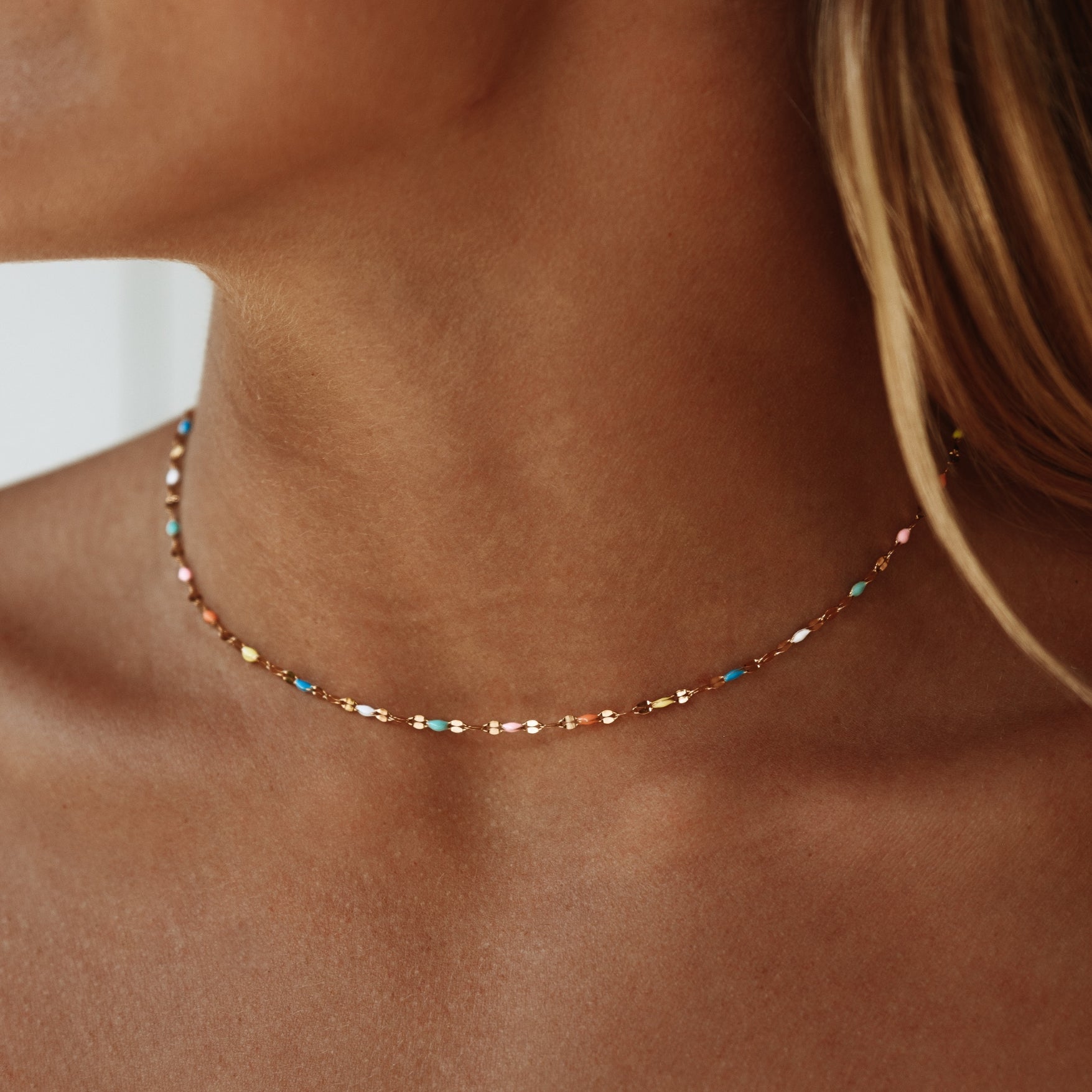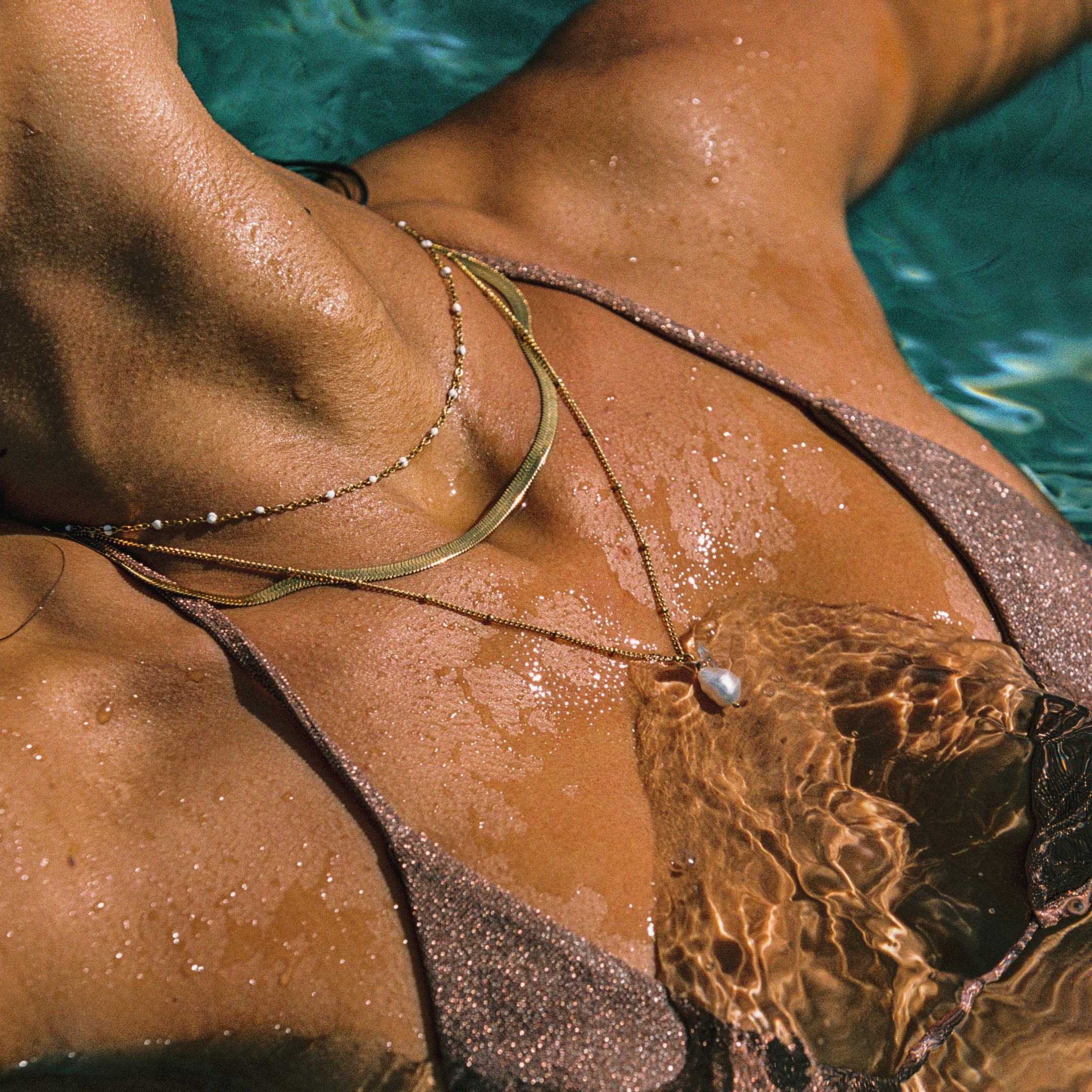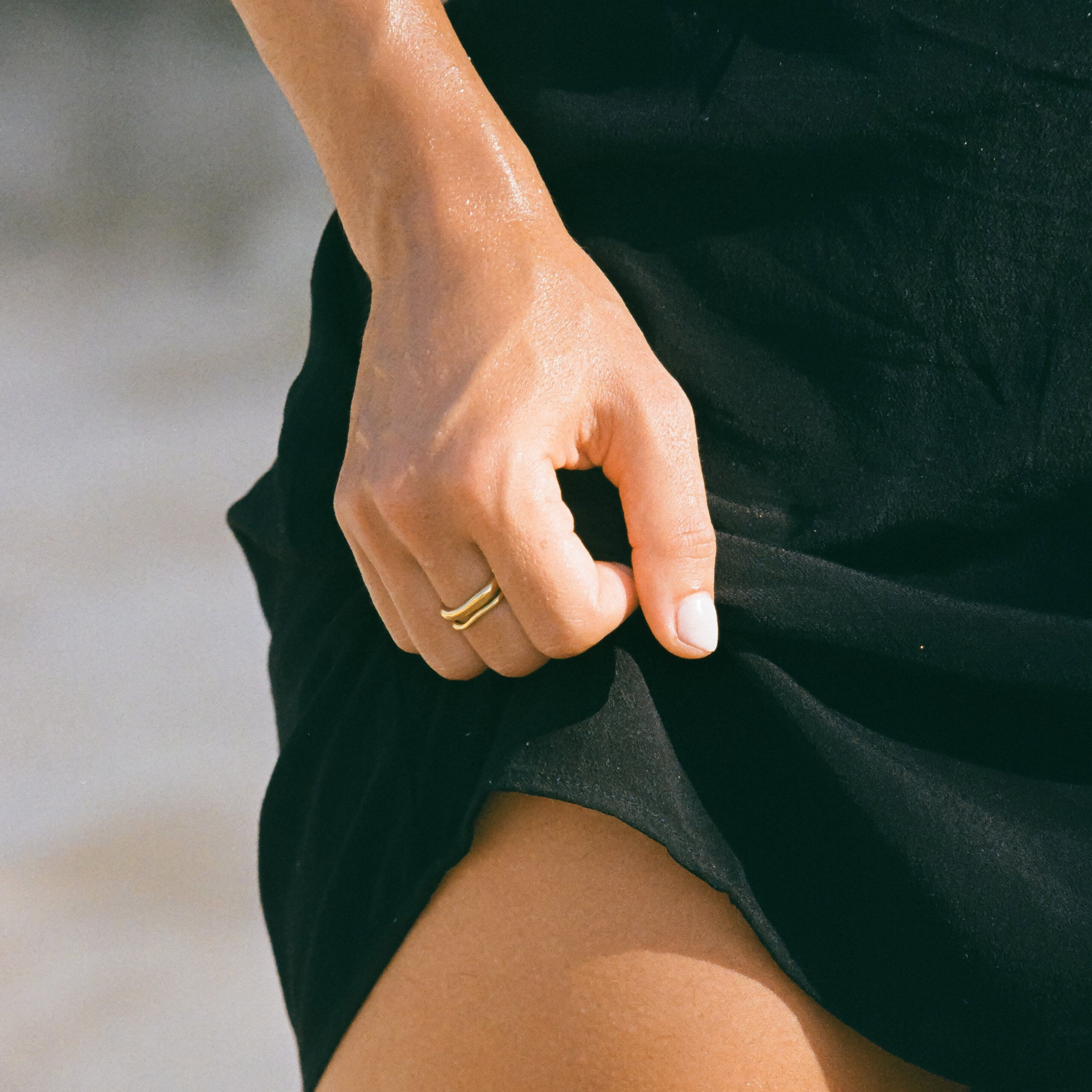
Does PVD Coating Wear Off? What You Should Know
Does PVD coating wear off? Yes, PVD coatings can wear off over time due to various factors. Their durability depends on coating thickness, substrate compatibility, and environmental conditions. While PVD offers superior wear resistance and adhesion compared to other coatings, exposure to high temperatures or corrosive environments can accelerate wear. You'll want to monitor for signs of degradation, like color changes or surface scratches. Regular maintenance helps extend the lifespan of PVD coatings, as consistent cleaning and proper storage are essential. By understanding these dynamics, you can better protect your PVD-coated items and enhance their longevity. Discover more insights into maximizing coating performance in our Tarnish-Free Jewelry collection.
Understanding PVD Coating
PVD coating, or Physical Vapor Deposition, plays an essential role in enhancing the performance and lifespan of various materials. Through advanced PVD processes, you can achieve a thin, uniform coating that adheres tightly to the substrate. This method involves vaporizing solid materials in a vacuum chamber and allowing them to deposit onto the target surface, creating a durable layer.
You'll find that the benefits of PVD are numerous. Primarily, it greatly improves wear resistance, which is vital for tools and components subjected to friction. Additionally, PVD coatings can enhance corrosion resistance, protecting materials from environmental damage and extending their operational life.
The coatings also exhibit low friction properties, which can lead to improved efficiency in moving parts. Moreover, PVD allows for a wide range of aesthetic finishes, enabling you to achieve the desired look without compromising functionality.
The versatility in materials and colors makes PVD an attractive option for various industries, including automotive, aerospace, and medical. Understanding these PVD processes and their benefits equips you with the knowledge to make informed decisions regarding material enhancement and application.
Factors Affecting Durability
Several key factors influence the durability of PVD coatings, and understanding them is essential for optimizing performance. One significant aspect is the coating thickness; thicker layers generally enhance wear resistance, extending the coating lifespan. However, excessively thick coatings may lead to adhesion issues, reducing overall durability.
Another important factor is the substrate material. The compatibility of the PVD coating with the substrate impacts adhesion and, consequently, the coating's performance under stress. For instance, hard materials like titanium or stainless steel provide a better foundation compared to softer substrates.
Temperature and environmental conditions also play a critical role. High temperatures can accelerate wear, while exposure to corrosive environments may compromise the coating's integrity.
You should consider these factors when selecting PVD coatings for specific applications.
Common Applications of PVD
What makes PVD coatings so versatile in various industries? One key factor is their ability to enhance the performance and longevity of components.
In the aerospace sector, PVD coatings are applied to turbine blades and other significant components to improve wear resistance and thermal stability. These coatings can withstand extreme conditions, offering significant pvd advantages regarding durability.
In the automotive industry, PVD is used to coat engine parts, tools, and decorative elements. The aesthetics combined with functional benefits provide a dual advantage.
However, it's vital to recognize the pvd limitations; for instance, while the coatings are highly durable, they may not be as effective in high-impact applications compared to thicker coatings.
Medical instruments also benefit from PVD technology, where the coatings reduce friction and enhance biocompatibility.
In the electronics field, PVD coatings are significant for creating thin films on semiconductors and enhancing the performance of optical components.
Signs of Wear on PVD Coatings
Identifying signs of wear on PVD coatings is essential for maintaining the performance of coated components. One of the primary indicators of wear is noticeable color changes. As the coating degrades, you may observe a shift in hue or a dulling of the surface finish. This alteration can often signify that the protective layer is thinning, impacting the substrate beneath.
Another critical sign to monitor is the presence of surface scratches. These imperfections can vary in depth and severity, and they often compromise the integrity of the coating. Scratches not only affect the aesthetic appeal but can also expose the underlying material to environmental factors, leading to further degradation.
When inspecting components with PVD coatings, pay particular attention to areas subjected to high friction or mechanical stress, as they're more prone to these signs of wear.
Maintenance Tips for Longevity
To extend the life of your PVD coatings, implement regular cleaning practices to remove contaminants that can cause wear.
It's essential to avoid abrasive materials during cleaning, as they can scratch and degrade the coating's surface.
Additionally, proper storage techniques will protect your items from unnecessary exposure to elements that could accelerate wear.
Regular Cleaning Practices
How can you guarantee the longevity of your PVD-coated items? Regular cleaning practices are essential. Start by establishing a maintenance frequency that suits your usage; for most items, weekly or bi-weekly cleaning is ideal. This consistency helps prevent the buildup of dirt and grime that can compromise the coating's integrity.
When selecting cleaning solutions, opt for mild, non-abrasive products. Avoid harsh chemicals that could degrade the PVD coating over time. A simple mixture of warm water and a gentle detergent is often sufficient. Use a soft microfiber cloth to gently wipe the surface, ensuring that you avoid any scrubbing motion that could inadvertently scratch the coating.
After cleaning, rinse thoroughly with clean water and dry immediately with a soft cloth. This prevents water spots and further residue buildup.
In environments with higher exposure to dust and contaminants, you might need to increase your maintenance frequency.
Ultimately, your commitment to regular cleaning practices will greatly enhance the durability and appearance of your PVD-coated items, ensuring they remain in excellent condition for years to come.
Avoiding Abrasive Materials
Abrasive materials can greatly undermine the integrity of your PVD-coated items, leading to premature wear and diminished appearance. When your items are exposed to abrasive environments, the PVD coating can suffer from micro-abrasions, which may not be initially visible but accumulate over time.
These interactions between the coating and abrasive materials can compromise the protective layer, reducing its effectiveness.
To maintain the longevity of your PVD coatings, it's essential to identify and avoid materials that may cause damage. For instance, avoid using scouring pads or harsh chemicals, as these can create significant friction and wear.
Instead, opt for gentle cleaning tools and mild solutions specifically designed for coated surfaces.
Be mindful of where you use your PVD-coated items. If they're regularly exposed to construction sites, garages, or other environments with abrasive particles, consider limiting their use in those areas or employing protective measures.
Regularly inspect your items for signs of wear or damage, as early detection can prevent further material interactions that may lead to severe deterioration.
Implementing these practices will help guarantee your PVD coatings remain intact and visually appealing for years to come.
Proper Storage Techniques
Proper storage techniques play a vital role in preserving the integrity and appearance of PVD-coated items. To guarantee longevity, focus on maintaining ideal temperature control and humidity levels.
Ideally, store these items in a climate-controlled environment where temperatures range between 60°F and 80°F (15°C to 27°C). Extreme fluctuations can lead to thermal expansion and contraction, jeopardizing the coating's adhesion.
Additionally, monitor humidity levels closely. High humidity can promote corrosion or moisture accumulation on the surface, which may compromise the PVD layer. Aim to keep humidity below 50%.
When storing items, use soft, non-abrasive materials, such as microfiber cloths, to wrap or cushion them. Avoid direct contact with metal surfaces or other hard materials that could scratch the coating.
Organizing items in a way that prevents them from clashing is vital. Utilize padded storage containers or dividers to minimize movement and contact.
Regularly inspect stored items for any signs of wear or damage, and address potential issues immediately. By implementing these proper storage techniques, you'll greatly enhance the durability and appearance of your PVD-coated items, guaranteeing they remain in ideal condition for years to come.
Comparing PVD to Other Coatings
When comparing PVD (Physical Vapor Deposition) coatings to other options, it's vital to evaluate several key performance metrics, including hardness, adhesion, and wear resistance.
PVD technology offers significant advantages, such as superior hardness and wear resistance, making it an excellent choice for demanding PVD applications in various industries like automotive and aerospace. However, PVD disadvantages include a higher initial PVD cost compared to traditional methods like anodizing and plating.
Regarding PVD vs. anodizing, PVD coatings typically provide better adhesion and durability, while anodizing may be more cost-effective for specific applications.
When considering PVD vs. plating, PVD generally outperforms concerning lifespan and resistance to corrosion. This performance is critical when you need components that withstand harsh environments.
While PVD coatings excel in hardness and adhesion, their suitability ultimately depends on the specific requirements of your project.
You need to assess factors like the desired PVD lifespan and the environmental conditions the coated items will face. By weighing these metrics, you can make an informed decision about whether PVD technology aligns with your needs or if alternative coatings might serve better.
Frequently Asked Questions
Can PVD Coatings Be Applied to Plastic Materials?
Yes, PVD coatings can be applied to certain plastic materials, but you'll face PVD limitations regarding temperature resistance and adhesion. Careful selection of substrates guarantees ideal PVD applications, enhancing durability and aesthetics for your projects.
How Thick Is a Typical PVD Coating?
A typical PVD coating thickness ranges from 1 to 5 microns. This thickness enhances coating durability, while various application methods, like sputtering or evaporation, guarantee ideal adhesion and performance across different substrates.
Is PVD Coating Environmentally Friendly?
PVD coatings are generally considered environmentally friendly due to their low environmental impact. Their sustainability stems from reduced waste and energy consumption during production, making them a viable choice for eco-conscious applications in various industries.
Can PVD Coatings Be Repaired if Damaged?
Yes, you can repair PVD coatings using various repair techniques. However, the effectiveness depends on the damage's extent and the coating longevity. Proper maintenance can also enhance the chances of successful repairs in the future.
How Does PVD Coating Affect Electrical Conductivity?
PVD coating can influence conductivity levels depending on the coating materials used. While some materials maintain high conductivity, others may reduce it, impacting performance in applications requiring precise electrical characteristics. You'll need to take this into account in design.
Conclusion
To sum up, while PVD coatings offer impressive durability, they can wear off over time due to various factors like friction and environmental conditions. By understanding the signs of wear and implementing proper maintenance, you can greatly extend the lifespan of your PVD-coated items. Ultimately, comparing PVD to other coatings reveals its unique advantages, making it a preferred choice in many applications. Staying informed about these aspects helps you make the best decisions for your needs.























Leave a comment
This site is protected by hCaptcha and the hCaptcha Privacy Policy and Terms of Service apply.